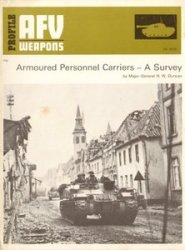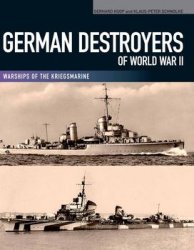Meanwhile, the Allied forces had planned an operation that obviously envisaged heavy opposition on the part of the Egyptians, and indicated their adherence to the set-piece type of battle they apparently anticipated. Consequently, the Allied task force set sail only on 1 November from
Valetta harbour in Malta. There is no doubt that the results would have been completely different had the British Prime Minister, Anthony Eden, taken the advice of General Sir Charles Keightley and Lieutenant-General Sir Hugh Stockwell (who had been in command of British forces in Haifa in 1948 and was now commander of the Allied land forces) to effect the landing on 1 November as was originally planned. This would have changed the entire pattern of developments and would have avoided many of the political issues.
The British forces at sea included an infantry division, a parachute brigade group and a Royal Marine Commando brigade, while the French forces included a parachute division, a parachute battalion and a light mechanized regiment. There were also the naval forces of both countries and air forces operating from the British and French aircraft carriers and from Cyprus. As this force was making its way slowly across the Mediterranean, to be joined en route by French units from Algeria and British units from Cyprus, political pressure from the Russians and in the United Nations increased, and the political limitations imposed on the British and French forces grew. They were hampered by a growing degree of hesitation on the part of the political leadership, particularly in Britain, where the Government came under very heavy attack both from the Opposition and from its own benches.
From 31 October, after the British and French Governments delivered an ultimatum calling for a withdrawal of forces from both sides of the area of the Suez Canal, their air forces attacked air bases in Egypt, destroying many Egyptian aircraft. The attacks directed by the Allies were exclusively against Egyptian air bases; at no point did the French or British aircraft become involved in support of the Israeli forces advancing in the Sinai.
Mounting efforts in the United Nations Security Council were being made to bring about a cease-fire, and twice the British and French vetoed such moves. Meanwhile, the Anglo-French force was sailing slowly across the Mediterranean, but it was losing in the race against political pressure. Under the pressure of events, Stockwell advanced the dropping of the parachute forces in the area of Port Said and Port Fouad by a day — to 5 November. Because of growing hostile public opinion in Britain and elsewhere, limitations were imposed on the types of guns that could be used by the naval vessels to shell the landing areas in support of the troops that were now sent in to land. On 6 November, the first British troops landed on the beaches of Port Said, while the French troops landed at Port Fouad. The Egyptian commander of Port Said, Brigadier Mogui, who had been taken prisoner, refused to issue a general order to surrender. General Stockwell thereupon decided to advance his forces southwards by helicopter and by parachuting troops into Ismailia and Abu Suweir. But, just as these operations were about to be mounted, the British Government caved-in under international political pressure, and agreed to a cease-fire at midnight on 6/7 November. The French were left with no alternative but reluctantly to follow the British. Thus ended the Sinai-Suez War of 1956.
There now began protracted negotiations, in which Israel attempted to obtain guarantees in respect of the two major developments that had brought about the war ~ the blockade of the Straits of Tiran and the fedayeen operations into Israel from Egyptian-controlled territory. The creation of a United Nations Emergency Force was proposed by the Canadian Government and accepted by the United Nations. Although Israel attempted to hold on to the essential areas of Sharm El-Sheikh and the Gaza Strip, United States pressure forced her to withdraw from these positions in return for ‘real guarantees’ of passage through the Straits and United Nations participation in the administration of the Gaza Strip. Both the Gaza Strip and Sharm El-Sheikh were to be placed in the control of United Nations Emergency Forces. Israeli withdrawal was carried out in stages.
In Gaza, the withdrawal of the Israeli forces led to a period of violence in which those who had allegedly ‘co-operated’ with the Israeli occupying forces, from November 1956 until the Israeli withdrawal in March 1957, were summarily executed. The United Nations soldiers in the Strip lost all control of the roaming fedayeen gangs and, indeed, of the entire situation. Within two days of Gaza being transferred to the United Nations, Nasser had nominated a military governor for the Strip who, without asking the UN, moved in with his headquarters — the United Nations did not even demur, and this weakness sowed the seeds for future problems in the area. Within a short time, the Mayor of Gaza was dismissed and replaced by a pro-Egyptian. At the same time, the UN, under pressure of the Egyptians, ordered its forces to vacate the Strip and only to patrol its borders. The UN Emergency Force took up positions along the borders between Israel and Egypt, and at Sharm El-Sheikh.
Israeli shipping did, ai last, move freely through the Straits of Tiran to and from Africa and Asia. A comparative lull set in along the Israel-Egyptian border, until ten years later when the ‘real guarantees’ of passage through the Straits were to be forgotten as Nasser ordered the United Nations forces out of Sinai. As they departed, the threat of war was to loom again.




 World History
World History









